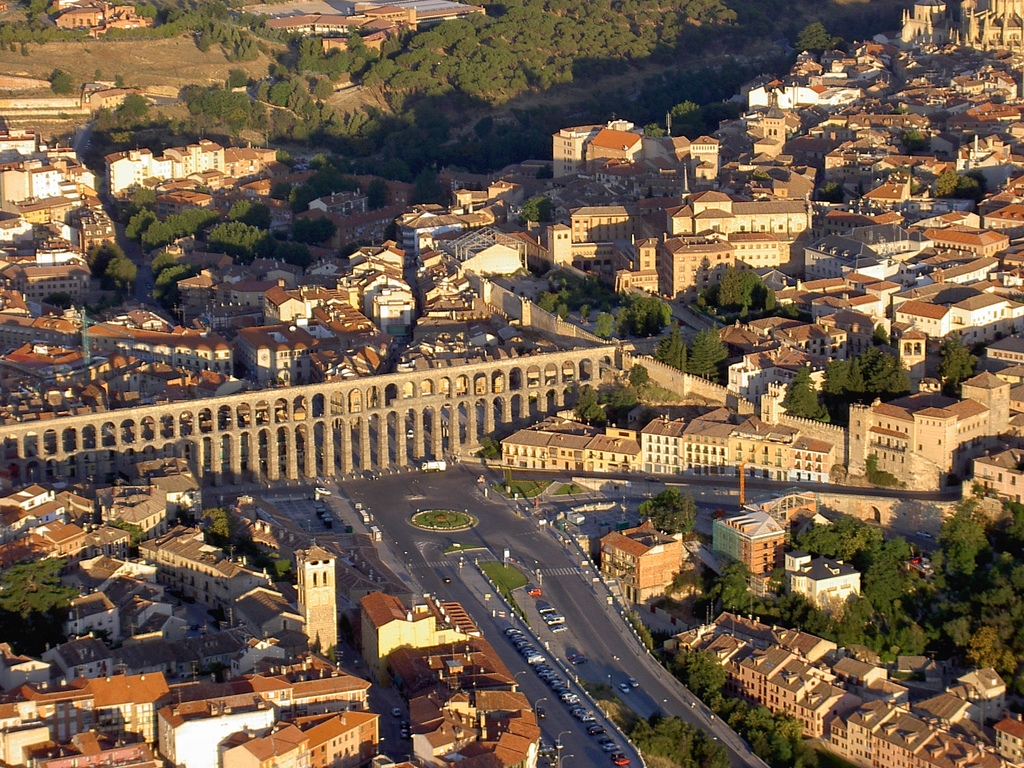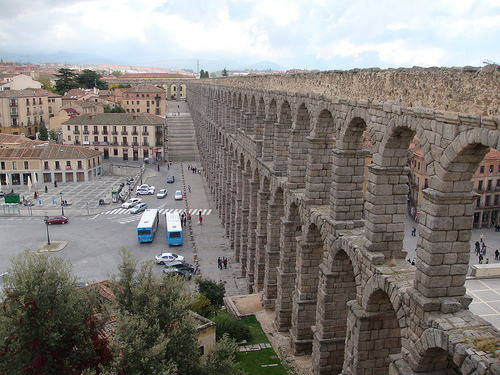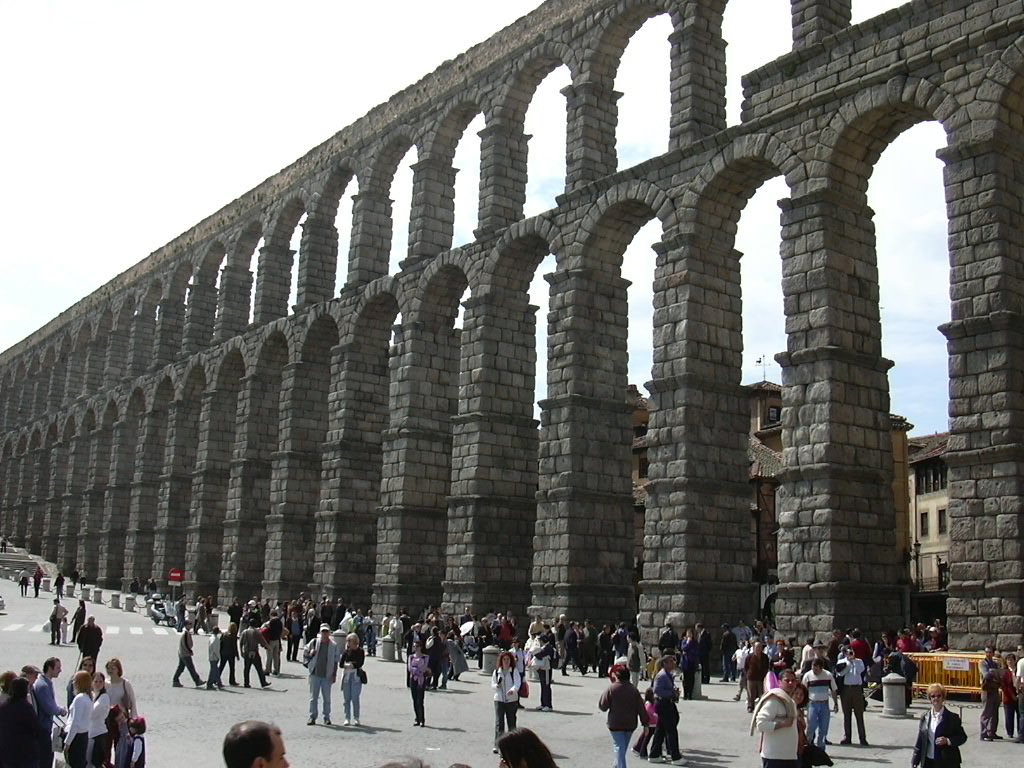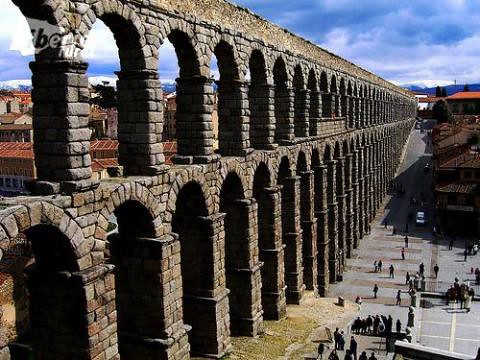As the aqueduct lacks a legible inscription , the date of construction can't be definitively determined. Researchers have placed it between the second 1/2 the first Century AD and therefore the early years of the 2nd Century throughout the reign of either Emperor Vespasian or Nerva. The beginnings of Segovia itself are likewise not definitively known. The individuals known as Vaccaei are known to own populated the world before the Romans conquered town. Roman troops sent to regulate the world, that fell among the jurisdiction of the Roman provincial court located in Clunia, stayed behind to settle there.
The aqueduct transports waters from Fuente Fría river, situated within the nearby mountains, some seventeen km from town in an exceedingly region called La Acebeda. It runs another fifteen km before arriving within the town.
The water is initial gathered in an exceedingly tank called El Caserón , and is then led through a channel to a second tower called the Casa de Aguas .
There it's naturally decanted and sand settles out before the water continues its route. Next the water travels 728 m on a one-percent grade till it's high upon the Postigo, a rocky outcropping on that the previous town center, the Segovia Alcázar, was built. Then, at Plaza de Díaz Sanz , the structure makes an abrupt flip and heads toward Plaza Azoguejo . it's there the monument begins to show its full splendor. At its tallest, the aqueduct reaches a height of twenty eight.5 m , together with nearly half-dozen m of foundation.
There are each single and double arches supported by pillars. From the purpose the aqueduct enters town till it reaches Plaza de Díaz Sanz, it boasts seventy five single arches and forty four double arches, followed by four single arches, totalling 167 arches in all.
The construction of the aqueduct follows the principles laid out by Vitruvius as he describes in his De Architectura printed within the mid-first century.
The first section of the aqueduct contains thirty six semi-circular arches, rebuilt within the fifteenth century to revive a little destroyed by the Moors in 1072.
The line of arches is organized in 2 levels, adorned merely, within which predominantly straightforward moulds hold the frame and supply support to the structure. On the higher level, the arches have a complete width of five.1 meters . inbuilt 2 levels, the highest pillars are each shorter and narrower than those on the lower level. the highest of the structure contains the channel through that water travels, through a U-shaped hollow measuring zero.55 by 0.46 meters. The channel continuously adjusts to the bottom height and therefore the topography below. The lower-level arches have an approximate width of four.5 meters Their pillars gradually increase in circumference size. the highest of every pillar features a cross-section measuring one.8 by 2.5 meters , whereas the bottom cross-section measures approximately a pair of.4 by three meters .
Principal facade of the Aqueduct of Segovia.
The aqueduct is constructed of unmortared, brick-like granite blocks. throughout the Roman era, every of the 3 tallest arches displayed a symptom in bronze letters, indicating the name of its builder beside the date of construction. Today, 2 niches are still visible, one on either side of the aqueduct. one in all them is thought to own held the image of Hercules, who in keeping with legend was founding father of town. the opposite niche currently contains the photographs of the Virgen de la Fuencisla and Saint Stephen.
The first reconstruction of the aqueduct happened throughout the reign of the King Ferdinand and Queen Isabella, called the Reyes Católicos or Catholic Monarchs. Don Pedro Mesa, the previous of the nearby Jerónimos del Parral monastery, led the project. a complete of thirty six arches were rebuilt, with nice care taken to not modification any of the initial work or vogue. Later, within the sixteenth Century, the central niches and above-mentioned statues were placed on the structure. On four December, the day of Saint Barbara, who is that the patron saint of artillery, the cadets of the native military academy drape the image of the Virgin in an exceedingly flag.
The aqueduct is that the city's most vital architectural landmark. It had been kept functioning throughout the centuries and preserved in glorious condition. It provided water to Segovia, mainly to the Segovia Alcázar, till recently. thanks to differential decay of stone blocks, water leakage from the higher viaduct, and pollution that caused the granite ashlar masonry to deteriorate and crack, the location was listed within the 2006 World Monuments Watch by the globe Monuments Fund. Contrary to fashionable belief, vibrations caused by traffic that used to pass below the arches didn't have an effect on the aqueduct as a result of its nice mass. WMF Spain brought along the Ministry of Culture, the regional government of Castilla y León, and different native establishments to collaborate in implementing the project, and provided help through the worldwide money services company yank specific.
























